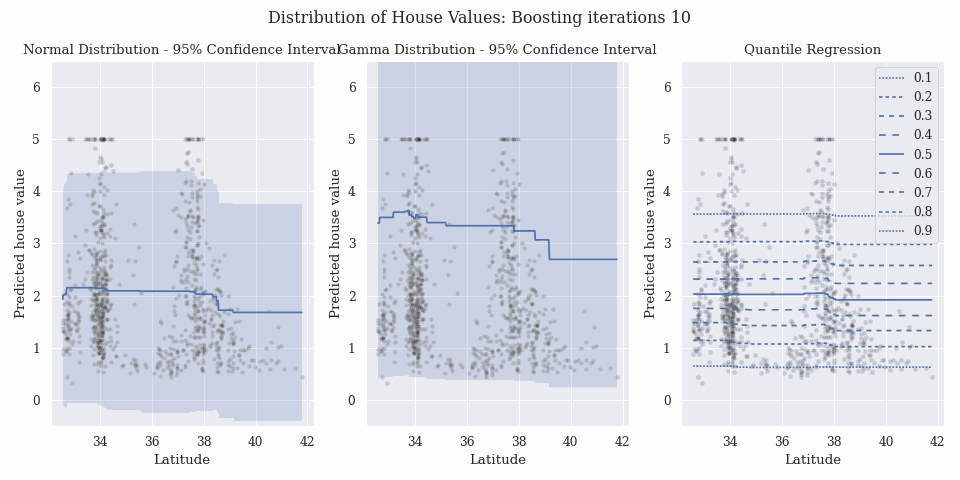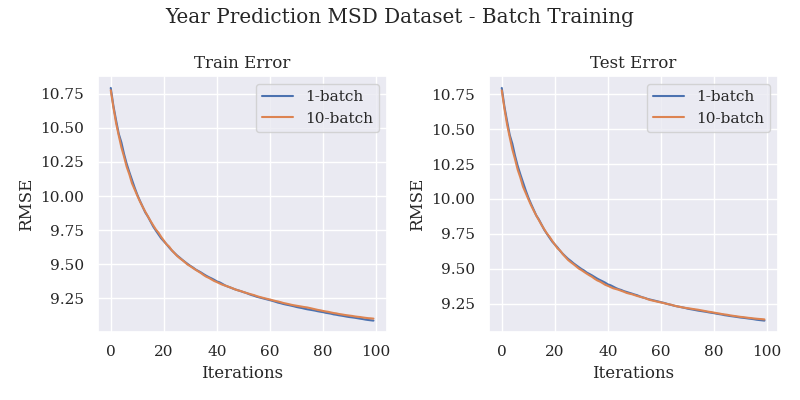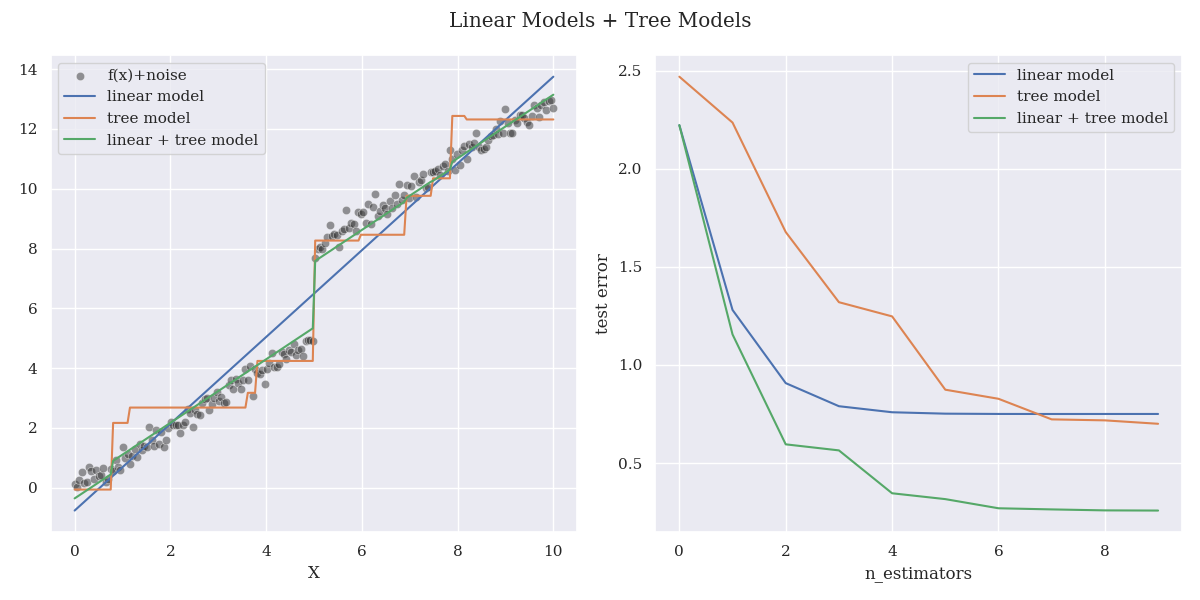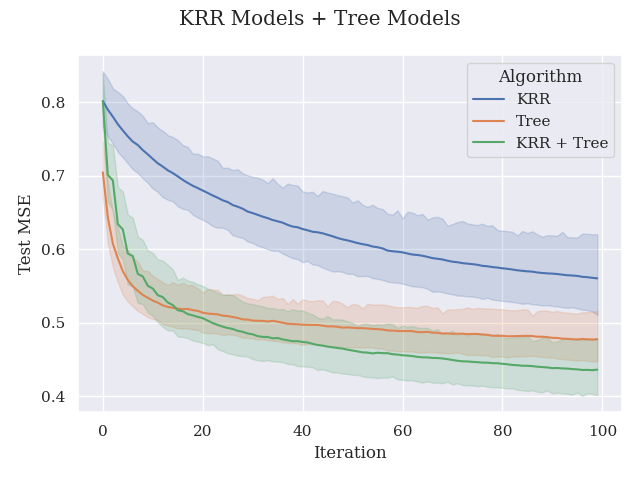legate-boost#
GBM implementation on Legate. The primary goals of legate-boost is to provide a state-of-the-art distributed GBM implementation on Legate, capable of running on CPUs or GPUs at supercomputer scale.
For developers - see contributing
Installation#
Install using conda.
# stable release
conda install -c legate -c conda-forge -c nvidia legate-boost
# nightly release
conda install -c legate-nightly -c legate -c conda-forge -c nvidia legate-boost
On systems without a GPU, the CPU-only package should automatically be installed. On systems with a GPU and compatible CUDA version, the GPU package should automatically be installed.
To force conda to prefer one, pass the build strings *_cpu* or *_gpu*, for example:
# nightly release (CPU-only)
conda install --dry-run -c legate-nightly -c legate -c conda-forge -c nvidia \
'legate-boost=*=*_cpu*'
For more details on building from source and setting up a development environment, see contributing.md.
Simple example#
Run with the legate launcher
legate example_script.py
>>> import cupynumeric as cn
>>> import legateboost as lb
>>> X = cn.random.random((1000, 10))
>>> y = cn.random.random(X.shape[0])
>>> model = lb.LBRegressor().fit(X, y)
Features#
Model ensembling#
legate-boost can create models from linear combinations of other models. Ensembling is as easy as:
>>> import cupynumeric as cn
>>> import legateboost as lb
>>> X = cn.random.random((1000, 10))
>>> X_train_a = X[:500]
>>> X_train_b = X[500:]
>>> y = cn.random.random(X.shape[0])
>>> y_train_a = y[:500]
>>> y_train_b = y[500:]
>>> model_a = lb.LBRegressor().fit(X_train_a, y_train_a)
>>> len(model_a)
100
>>> model_b = lb.LBRegressor().fit(X_train_b, y_train_b)
>>> len(model_b)
100
>>> model_c = (model_a + model_b) * 0.5
>>> len(model_c)
200
Probabilistic regression#
legate-boost can learn distributions for continuous data. This is useful in cases where simply predicting the mean does not carry enough information about the training data:

The above example can be found here: examples/probabilistic_regression.
Batch training#
legate-boost can train on datasets that do not fit into memory by splitting the dataset into batches and training the model with partial_fit.
>>> import cupynumeric as cn
>>> import legateboost as lb
>>> from sklearn.utils import gen_even_slices
>>> X = cn.random.random((1000, 10))
>>> y = cn.random.random(X.shape[0])
>>> total_estimators = 100
>>> estimators_per_batch = 10
>>> n_batches = total_estimators // estimators_per_batch
>>> train_batches = [(X[i], y[i]) for i in gen_even_slices(X.shape[0], n_batches)]
>>> model = lb.LBRegressor(n_estimators=estimators_per_batch)
>>> for i in range(total_estimators // estimators_per_batch):
... X_batch, y_batch = train_batches[i % n_batches]
... model = model.partial_fit(X_batch, y_batch)

The above example can be found here: examples/batch_training.
Different model types#
legate-boost supports tree models, linear models, kernel ridge regression models, custom user models and any combinations of these models.
The following example shows a model combining linear and decision tree base learners on a synthetic dataset.
model = lb.LBRegressor(base_models=(lb.models.Linear(), lb.models.Tree(max_depth=1),), **params).fit(X, y)

The second example shows a model combining kernel ridge regression and decision tree base learners on the wine quality dataset.
model = lb.LBRegressor(base_models=(lb.models.KRR(sigma=0.5), lb.models.Tree(max_depth=5),), **params).fit(X, y)
